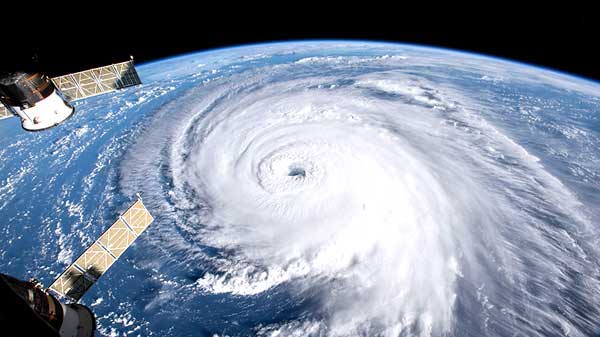12 to 17 Named Storms Prediction includes both tropical storms and hurricanes

(NPR) – The 2023 Atlantic hurricane season, which begins June 1, will be “near-normal” according to the annual forecast by the National Oceanic and Atmospheric Administration (NOAA).
This is the first time in eight years that the May outlook hasn’t forecast an above-average number of storms. NOAA is predicting 12 to 17 named storms, which include both tropical storms and hurricanes. About half of those are expected to be full-blown hurricanes. Not all storms make landfall.
Still, federal officials warn that people who live in hurricane-prone areas should not focus too much on the total number of storms.
“Remember, it only takes one storm to devastate a community,” says Rick Spinrad, who leads NOAA. “It’s time to prepare.”
That means making a plan for how to evacuate if a storm is headed your way, getting ready for power outages, and thinking about how to care for elderly family members, people with disabilities, children and pets.
Hurricane risks extend to those who live far from the coast, where storms make landfall. Even relatively weak storms can cause dangerous flooding inland, and climate change is making heavy rain from hurricanes more common.
And although peak hurricane season won’t arrive until later in the summer, forecasters are adamant that a devastating storm can occur at any time.
The damage caused in Guam this week by Typhoon Mawar, which was the first storm of the Pacific hurricane season, underscores that danger.
There is also extra uncertainty about what this year will hold because of the strange confluence of conditions in the Atlantic.
On the one hand, the climate pattern El Niño will almost certainly take hold in the coming months and persist through peak hurricane season in the late summer and early fall. That will create wind conditions that disrupt hurricanes.
But the ocean water in the area where hurricanes form is abnormally warm right now, and is expected to stay that way throughout hurricane season, which runs through November. That’s part of a global trend of rising ocean temperatures due to climate change, although scientists are still trying to understand what is driving this year’s record-breaking ocean heat.
What is clear is that warmer water helps hurricanes form.
So, will the 2023 conditions be bad for hurricanes overall, or good? Forecasters say it’s a little unclear.
“It’s definitely kind of a rare setup for this year,” says Matthew Rosencrans, lead hurricane season forecaster with NOAA’s Climate Prediction Center. He says his team of forecasters are extremely experienced when it comes to predicting what will happen during hurricane season but that there is almost no historical precedent for this year.
“When we looked at it we were definitely, like, ‘Wow, there’s a lot of uncertainty this year.'”
The post NOAA REPORT: 2023 Atlantic Hurricane Season, Which Begins June 1, Predicts 12 to 17 Named Storms appeared first on Space Coast Daily.
